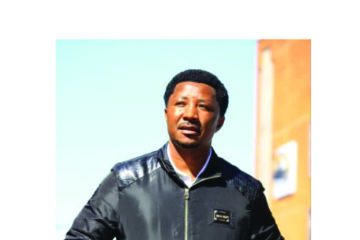Allexer Namundjembo
With the ongoing water crisis in the Oshikoto region where residents depend on boreholes and wells, the community of Onamishu in Eengodi Constituency has received upgraded wells to improve water supply.
Eengodi regional councillor Protasius Neshuku on Monday told Windhoek Observer that the existing wells were modernised last month.
According to him, solar panels and a generator now power the wells to extract water more efficiently.
“These are the traditional wells we have been using for ages, but they have been electrified by Rural Water Supply, and now it is an easy and fast process for the residents to get water from the ground,” Neshuku added.
He expressed appreciation for Rural Water Supply’s role in the project, noting that two wells in Onamishu had been upgraded and equipped with water tanks.
“I would like to thank them for the initiative. They have revamped two wells in Onamishu. They have also installed water tanks, from which water is pumped by the generator, and people can then fetch the water. Even though only two wells were revamped, we are grateful for that, and we hope they will transform other wells as well,” he said.
The Eengodi Constituency has been grappling with persistent water shortages, and the residents often rely on wells with high salinity levels.
This made the water less suitable for consumption.
In some areas, the lack of operational boreholes has forced communities to share the limited water with their livestock.
The residents have been requesting borehole drilling and the renovation of existing water infrastructure as well as the construction and maintenance of earth dams to harvest and store rainwater.
Wells are a primary source of water in most areas in the northern parts of the country.
In the Okongo area in the Ohangwena region, the situation is similar, where people and livestock have to travel long distances for well water.
Okongo community activist Ferdinand Shitana has urged the government, through the Ministry of Agriculture, to utilise the Ohangwena Aquifer to address water shortages in the region.
According to him, the communities continue to rely on boreholes despite the availability of underground water.
He said should the aquifer water be used, locals should be prioritized for water supply before water is exported to other parts of the country.
“We have seen how the government handles minerals in other parts of the country. Mine owners export resources without even developing the host areas; that should not happen with the underground water if it is utilised,” he stressed.
The Ohangwena II aquifer, discovered through a drilling program that began in 2007, is located in the Ohangwena region, straddling the border between Namibia and Angola.
According to findings, the aquifer is recharged by mountains in southern Angola, and the majority of its water is estimated to be around 10,000 years old.
Investigations into the aquifer’s yield, size, and sustainable abstraction began in 2016. Currently, the aquifer supplies water to the town of Eenhana, providing approximately 40 cubic meters of water per hour through three boreholes that were drilled in 2017.




